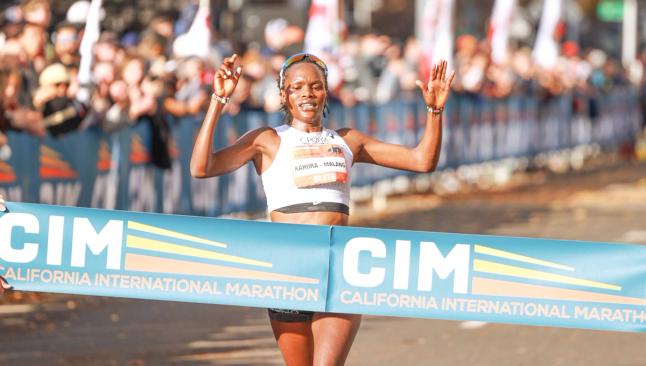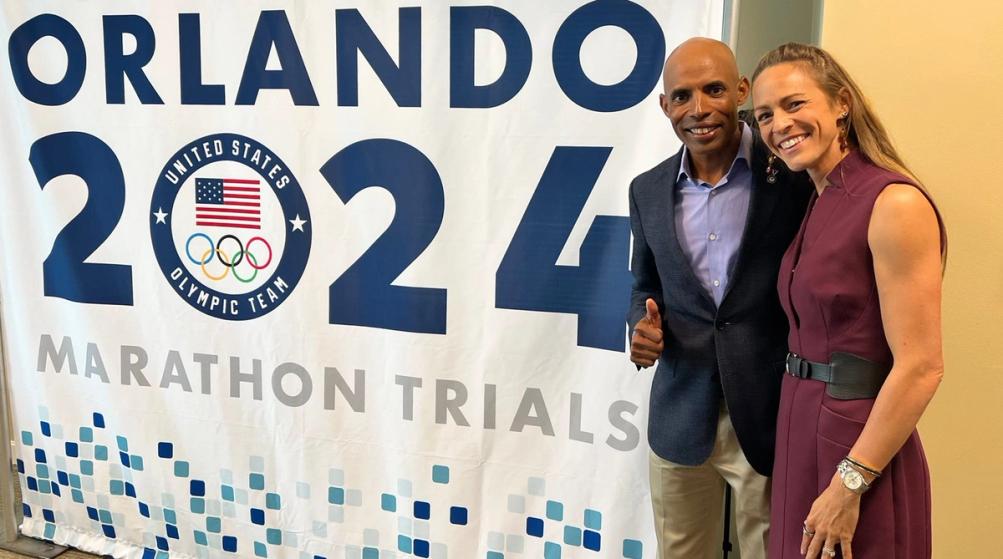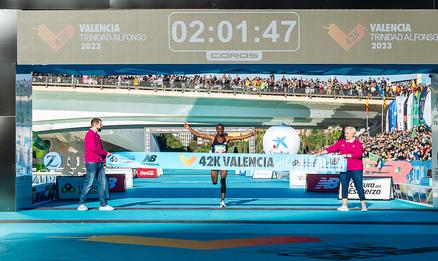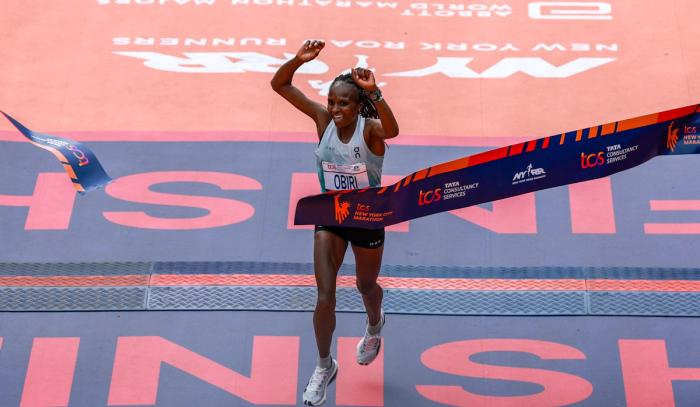By Kyle Merber
December 6, 2023
Normally the winner of the race will garner the most attention, except when it’s the final weekend of the qualifying window for the Olympic Marathon Trials. Although fans were understandably hyper-focused on those rounding the corner with the clock ticking towards 2:18:00 and 2:37:00, can we first please give a round of applause – or at least take a moment of silence while reading this to acknowledgment race winners CJ Albertson and Grace Kahura?
The self-proclaimed “best downhill runner in the world” was built for a course like the California International Marathon’s, and it showed. He won the day by almost two minutes, running 2:11:09 (Results). On his best day, CJ will be a contender in Orlando in February for the top three. Unfortunately, he will have to run under 2:11:30 there to even be eligible, as the net-downhill finish of the Sacramento course is not an eligible course according to World Athletics. Although USATF accepts times for the Trials, these marks cannot be used for the reallocation of Olympic qualifying marks.
But if there is somebody who will run fearlessly, regardless of what the conditions end up being, it would be CJ. He has spent ample time in a questionably safe apparatus at his home in Fresno to prepare for the moment.
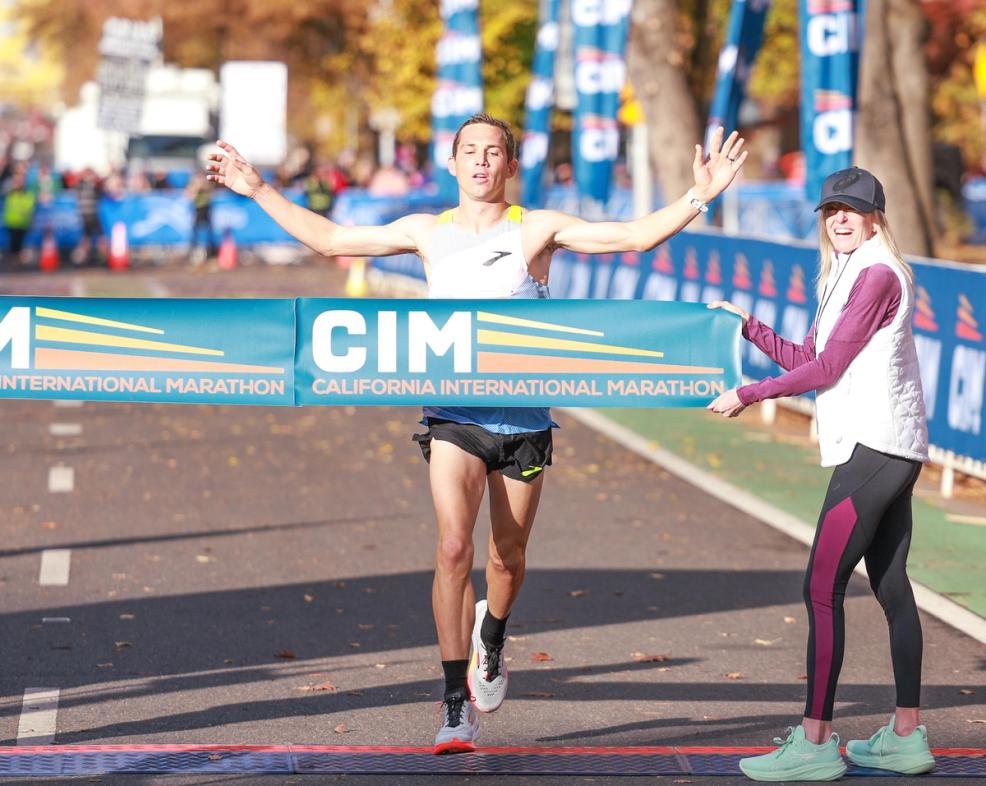
Justin Britton / @JustinBritton
Kahura ran 2:29:00 to win by almost four and a half minutes over second-place finisher Allie Kieffer (welcome back!). As a Kenyan athlete, she will not have to figure out what the reallocation of spots process will look like – lucky her!
Now that December 5th has passed, there are unofficially 226 men and 173 women standing under the confetti yelling, “I am going to Disney World!” The bar was raised significantly on the women’s side and as predicted, dropping the time by eight minutes meant that there would no longer be 513 qualifiers. The men’s field will shrink from 260, on account of the standard just being one minute faster.
Two years ago I set the over/under at 200 on both sides of the equation. Well, it averaged out to be pretty damn close! Although the change to the women’s standard was more dramatic, and perhaps a comparatively more challenging mark to hit, it’s pretty amazing to consider the increase in depth over the past couple of decades.
Look at how many women broke 2:37 in each of the last six qualifying cycles: 2004 (13), 2008 (16), 2012 (27), 2016 (34), 2020 (91), 2024 (158) – remember, not all qualifiers ran the full marathon to achieve their standard.
And imagine how many more athletes likely shot for the moon and faded in the last few miles only to land amongst the stars! Admittedly then there’s the fact that some of the previous qualifying women may have been capable of running faster but ran safely and conservatively because it wasn’t necessary to get into the Trials.
My hope and expectation is that the women’s standard remains at 2:37 in 2028 and that the men’s is lowered another minute or two. It’s a balance between ensuring the carrot being dangled out in front is attainable while continuing to raise the definition of excellence.
To close out this section, apologies to anyone who feels personally upset by that last paragraph – don’t worry about emailing to let me know, just pretend you copied and pasted the following into Gmail: “Dear Kyle, I ran 2:18:01 and did not qualify for the Olympic Trials. Are you suggesting that I am not an excellent marathoner? That’s better than YOU have ever run! Sincerely, I hate-read your stupid newsletter every week.”
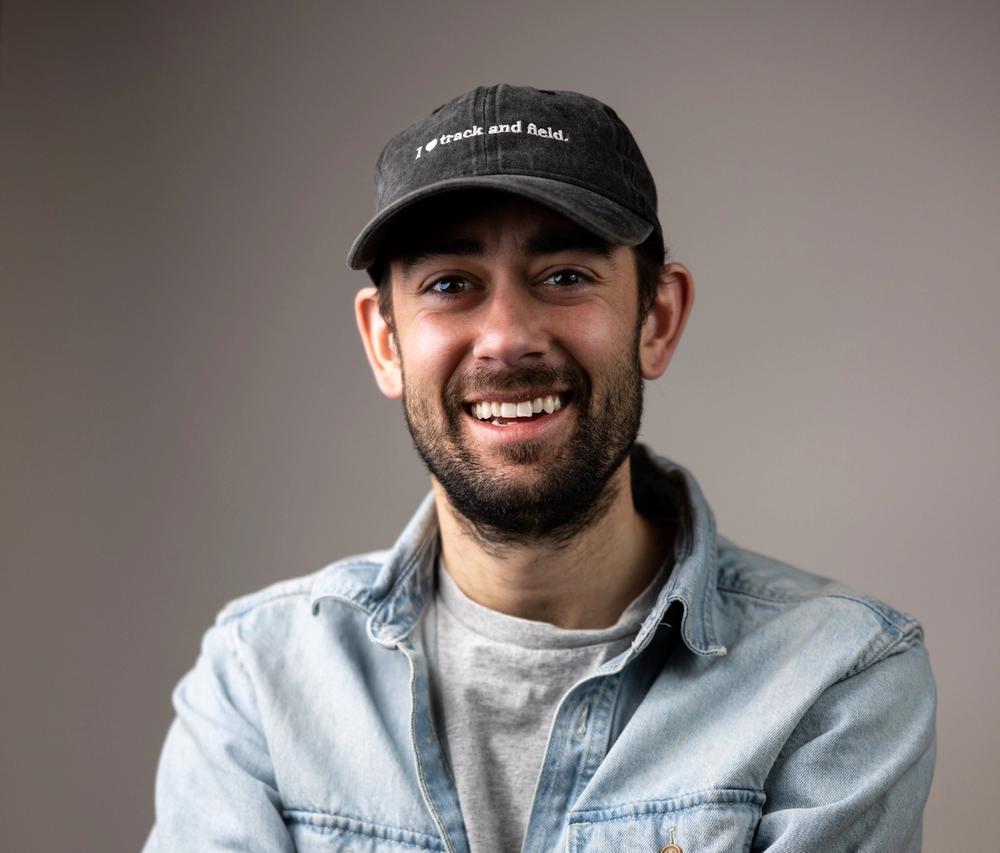
Kyle Merber
After hanging up his spikes – but never his running shoes – Kyle pivoted to the media side of things, where he shares his enthusiasm, insights, and experiences with subscribers of The Lap Count newsletter, as well as viewers of CITIUS MAG live shows.
